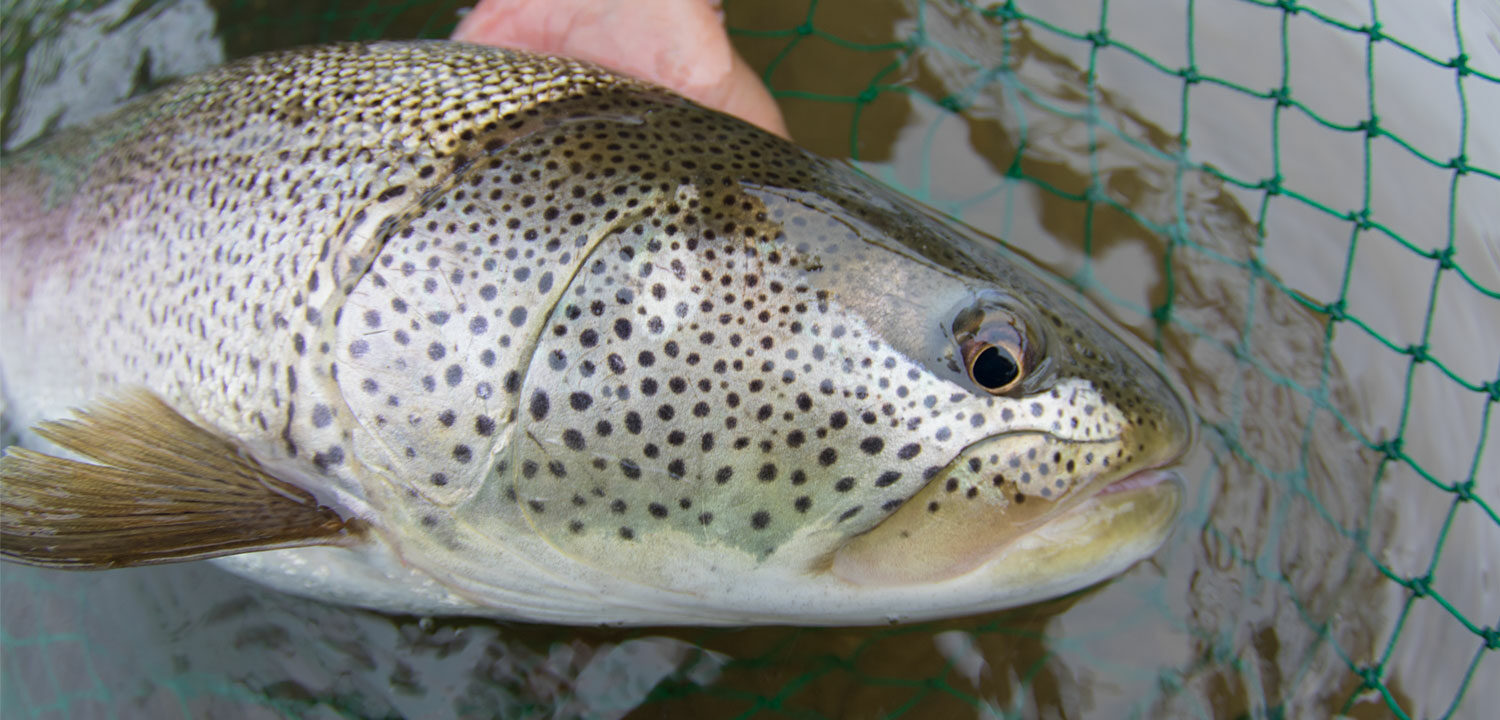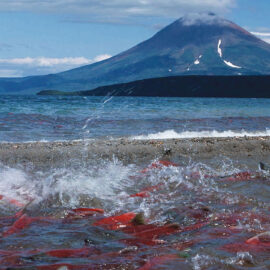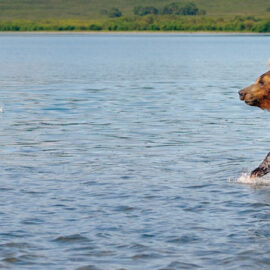WSC reports from the Koppi, sees success first hand and launches new taimen tracking program.
The Koppi River, in the remote wilds of the Russian Far East, is a place of rare convergences: where taimen and tiger thrive, where communities depend on the watershed’s abundant natural resources for hunting, trapping and fishing and recognize the importance of protecting the natural resources they depend on. It’s also a place of mystery: you’ll be sure to find 30-40 pound Sakhalin taimen resting in the eddies of the protected upper watershed, but to date, there is little known about this apex species. If we are to protect them, we need to find out more. Wild Salmon Center staff travelled to the Koppi this June to do just that.
The Koppi Was The First
The Koppi holds an important place in Wild Salmon Center history as the first protected area WSC and our partners established in the Khavaborsk region. The Koppi combined a globally unique, valuable watershed with a community committed and ready to support protection. With these critical pieces in place, it still required a decade of collaborative work between WSC, our longtime partners at Khabarovsk Wildlife Foundation, and the Ministry of Natural Resources of the Khabarovsk region.
We were able to get solid protections in place: over 200 river miles and 94,000 acres (38,032 ha) of prime fish and wildlife habitat were permanently protected in 2010. This is a river where unique runs of cherry, chum and pink salmon thrive alongside taimen and, oaks, alders, pine and larch create a thick buffer along the river’s edge. Establishing these boundaries was also a first step to ensuring that the Koppi continues to be a place where people can make a living year-round. Outfitters can obtain special permits to trap sable even in winter and run taimen sportfishing trips. The protections also ensure that local communities like the Orochi indigenous tribes can continue their traditional ways of subsistence and kick off the first annual celebration of the salmon returns in the North Pacific. And most importantly, the preserve’s location adjacent to other protected areas, including the Botchinsky Reserve, also provides important migratory corridors for birds like the fish-eating Blackiston owl and tigers.
You Can See the Change
For Mariusz Wroblewski, WSC’s Western Pacific Director, a visit this June was an opportunity to see first-hand the shared successes of his partnerships on the ground: “The protected area is working, it is providing a sanctuary for taimen, and we are keeping critical habitat off limits to poachers and the public. We have an essential healthy and effective level of community engagement in monitoring fishing in the area. And I’ve never seen so many pink and cherry salmon in the Koppi. A huge sign of change after seeing diminished runs in so many other places.”
“The protected area is working, it is providing a sanctuary for taimen, and we are keeping critical habitat off limits to poachers and the public.”
Both Wroblewski and WSC Science Director Dr. Matt Sloat came away inspired by the opportunity to reinforce partnerships with communities on the ground and to show that Wild Salmon Center is about more than just protection, that we are committed to protecting the Koppi for the long haul.
With their hosts Victor Voydilov and his son Ivan, their Orochi guide Victor Savielka, Wroblewski, Sloat and Alexander Kulikov from Khabarovsk Wildlife Foundation, explored the watershed from where the river meets the sea to its upper reaches. They traveled via the Koppi’s signature, handmade, green shallow-bodied boats.
The lower watershed is currently unprotected, and it showed. There’s riverside development complete with roads and summer homes, bringing people cars and boats into the area. There’s a lot of sport fishing tourism and commercial fishing as well. And, notably, almost no taimen. Unfortunately, the one taimen that was spotted was covered in netting marks.
As soon as they crossed the protected area border, signs of people dropped away and they were in the true wilderness. This was Sloat’s first trip to the Koppi—and for our our resident fish ecologist, “seeing the diversity of the Koppi’s salmonids was incredible, they were everywhere. Cherries, pinks, yellow-spotted grayling and Dolly Varden char. And then of course, the huge Sakhalin taimen resting in the warm eddies.”
Taimen Trackers
But they weren’t just there to observe the protected area, they were there to launch the Taimen Tracking science program in partnership with Voydilov’s son, Ivan, who is taking over the family’s outfitting business. Ivan recognizes that taimen make the Koppi a world-renowned fishing destination and is supportive of our efforts to build scientific knowledge about this keystone species.
We know generally that there are more taimen in the Koppi River preserve, but we don’t have hard population numbers and there’s little science about how Sakhalin taimen use the the river throughout their life. Building on our success in Khabarovsk’s Tugur River using low impact monitoring tools, we hope to get a better sense of the Sakhalin taimen ecology in the Koppi. Ivan’s guest anglers will photograph and measure every taimen they catch and release and share the data with WSC’s Matt Sloat. In turn, we will share our findings about the mysterious taimen with Ivan and our partners.
The goal is to estimate the total population size of the taimen to better understand their migration patterns and distribution in the watershed. We’ll better understand mortality rates based on the results from catching, releasing and recapturing fish. This data will help inform how we can best conserve and protect the taimen even while continuing to support sport fishing. Should we expand protections throughout more of the watershed? And if so, what kind of protections will best serve the rare taimen and the people who depend on them?
At the end of fishing season this October, we’ll have more knowledge about the taimen than ever before, but Sloat and Ivan have set up this tracking system for the long haul. The more data we collect, the more precise our knowledge, and management adaptations can be for this culturally, ecologically, and economically important species. Our commitment to the Koppi River’s people and the taimen that call the Koppi home lays beyond the paper designation.




